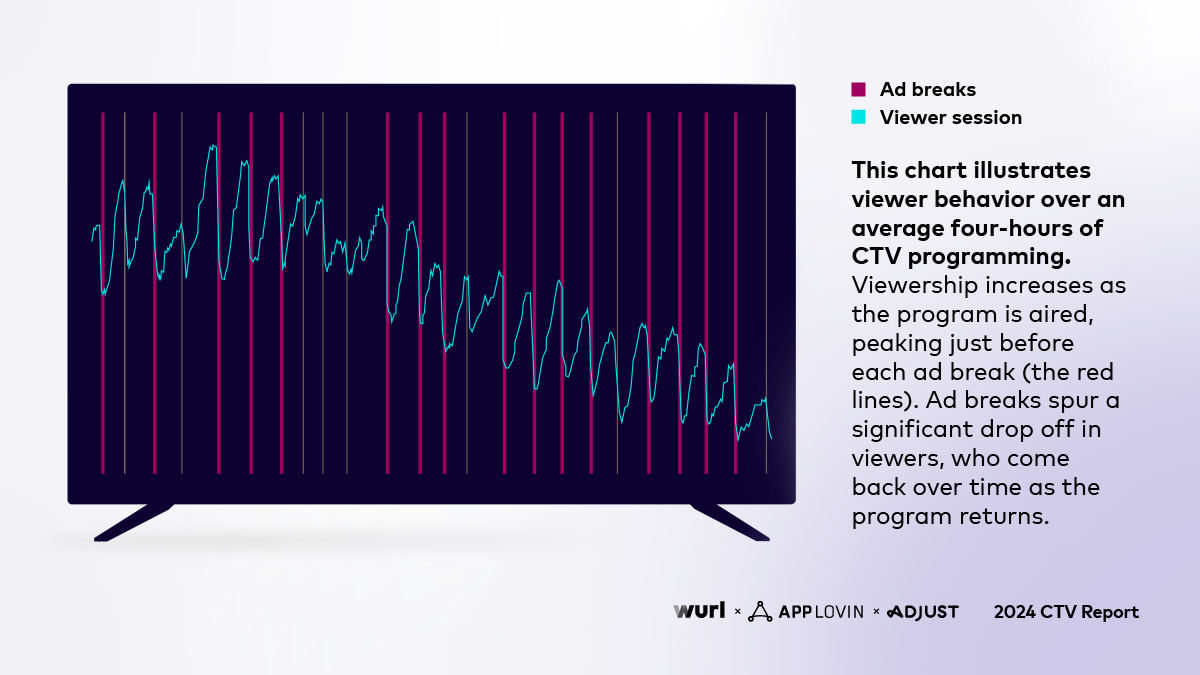
With more people watching connected TV and more ad dollars spilling into ad-supported streaming, more research is being done into how consumers react to commercials.
A new study by Wurl based on more than 1 million transitions from FAST channel content to ad breaks, found that 4% of viewers are lost per minute, which means during a two minute ad break, a channel loses 8% of its audience.
“Wurl’s data shows what you would expect,” The report states. “Viewers frequently change channels during ad breaks when the content and ads are not aligned, with a portion not returning after the ad break.”
In traditional TV, a commercial runs regardless of how many people are watching. In streaming, ads can’t be served to viewers who are no longer available, so there’s a lost opportunity.
At the same time, if the commercial is not a good fit with the content, the result could be a negative association for the brand.
The report contends that the percentage of viewers avoiding commercials can be reduced when the ads are a better match for the content being watched.
“Viewers are more engaged when content and ads align Improving the congruence between ad creatives and programming can significantly increase ad acceptance and brand recall. Contextual targeting, which ensures the delivery of the right ad at the right time, leverages the storytelling power of CTV by priming viewers, the report said.
Wurl ran a test to see if creating higher emotional resonance between ads and content correlated to a lower rate of viewer loss.
It used an algorithm that gave streaming content and ad creative an “emotional score” and then calculated the correlation between those scores.
Wurl found that the closer the correlation was to 1, the closer the emotions matched. Scenes and ads with a score of 1.0 resulted in nearly a 50% reduction in user loss compared to a score of 0.4. Ads with a cosine similarity of 0.75 or higher significantly improved user retention.
“The data is fairly clear on this point: ensuring your ads match the tone of the content around them makes viewers less likely to switch away,” the report said. “For advertisers looking to ensure audiences are aware of their ad and engaged in the content, finding the right context is critical.”
The report said that the CTV world continues to evolve and that advertisers will have to be agile to adapt to the changing environment.
“New and innovative solutions are emerging to deal with some of the headaches marketers have faced when trying to buy programmatically on CTV,” the report concluded. “With new approaches to metadata, context analysis, and audience targeting, we’re entering a new era where brands can harness CTV's full potential to create impactful and effective advertising campaigns that drive real business results.”







